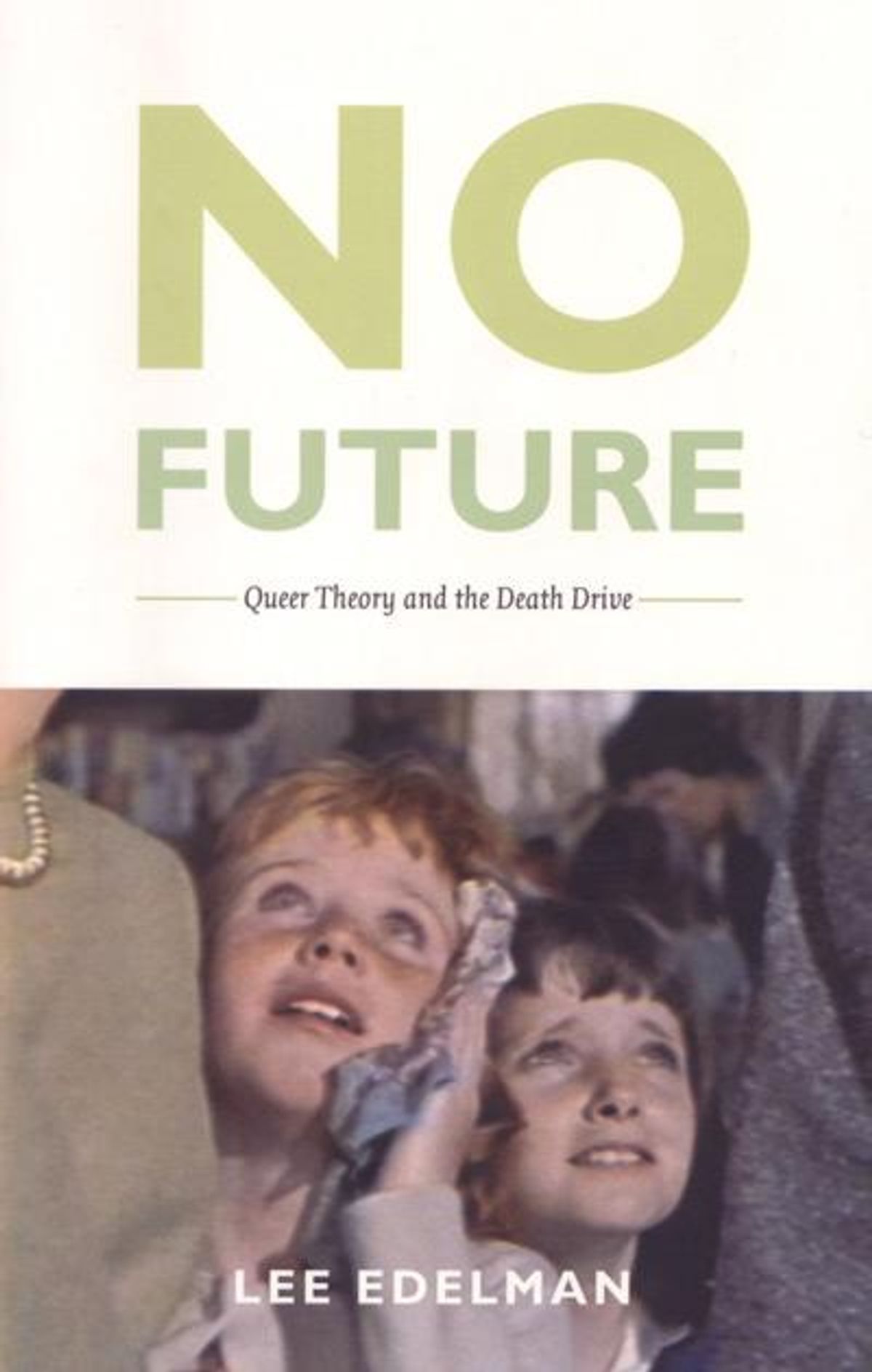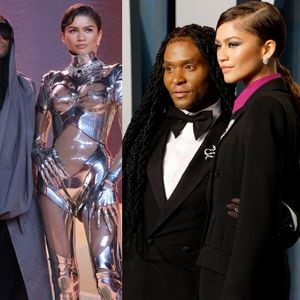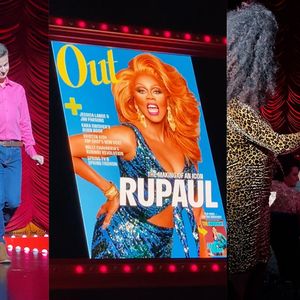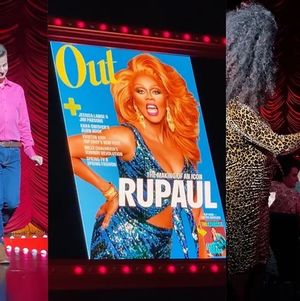I completed my honors thesis last year.
I wrote about the pleasures and pains born of gay male diva worship. Yes, those women we put on glittered pedestals, from the likes of Mae West to Madonna all the way until we hit Miley.
But because I wanted to underpin my research with writing from the canon of queer theory, I became unstuck because of the inaccessibility of this academic and convoluted body of writing.
As I hunted through library bookshelves and watched camp classics, I struggled to find accessible dossiers covering the material that came out of the academic movement known as queer theory from the early 1990s.
Of course, there were so-called study guides that carried on about Judith Butler's famous critiques of gender theory and the umbrella-ness that queer can connote, but there was no real overview of some of the cardinal texts to consult when delving into the library of queer.
I think many of us exposed to queer academia know how exclusively conflated Judith Butler is with queer theory and vice versa. Butler's a well-known name, irrevocably tied to her 1990 book Gender Trouble, and is a truly contradictory instance of an academic with celebrity status; apparently she gets standing ovations and cheers and all the rest.
And so it was during my year of wading through library catalogs and convoluted journal articles that I discovered some profound and truly incredible texts that embodied some of the queer energies I identified with during my escapades in academia.
Since I have yet to encounter any type of relaxed article that democratizes some of their political importance and indeed brushes away their shrouded mystique, I thought I'd make an attempt here. I want to bring out these few books from their convoluted canon, brush off the dust, and encourage other queer and nonqueer folk to consider them in their own queer projects.
What is also great is that these books are not necessarily those that require cover-to-cover reading. If anything, I think more can be gained from reading the introductions and initial chapters than reading these books as if they are novels. For instance, I reread the introduction of Lee Edelman's No Future: Queer Theory and the Death Drive (2004) over and over because I wanted to immerse myself in a mostly unfamiliar politics and retain the central conceits that constructed his first chapter.
I should flag, however, that white gay men wrote two of these books, and they each primarily concern gay male experiences rather than other sexual and gender identities in the queer spectrum. While I do use Eve Kosofsky Sedgwick's Epistemology of the Closet, it is similarly concerned with gay male experiences and "homosexuality" as it relates to men. Therefore, I point out that these texts I identified with more because they concerned the gay male experience and related more to my topic of gay male diva worship.
Nevertheless, I think their cultural and political importance cannot be understated and that each may offer queer and non-queer readers alike a pool of ideas that resonate for weeks and months to come, as they did for me.
Epistemology of the Closet (Berkeley: University of California Press, 1990)
By Eve Kosofsky Sedgwick
Epistemology of the Closet was a landmark book born out of the early queer theory movement. While Gender Trouble captivated many because of its learned and complex deconstruction of gender, Epistemology examined the construction of (male) homosexuality in the 19th century and traced its problematic implications well into the 20th, reverberating to questions of language, representation, and ways of thinking about sexuality. Sedgwick's project, as she outlines in her iconic first sentence, was to "propose that many of the major nodes of thought and knowledge in twentieth-century Western culture as a whole are structured -- indeed fractured -- by a chronic, now endemic crisis of homo/heterosexual definition, indicatively male, dating from the end of the nineteenth century."
Her central idea was that the binary comparison of homosexuality with heterosexuality (and vice versa) limits and confines the complexity of sexuality and moreover has become the paradigm on which other binaries in our language and indeed culture are based. Sedgwick contended that, by revising these oppositional structures that govern our understanding of (homo)sexuality, we can legitimize and appreciate more diverse and unique embodiments of sexual desire.
What was Sedgwick's most fascinating idea in Epistemology was the so-called "trope of the unspeakable." Because of the stigma and shame associated with homosexuality over its history, for a long time it was never named or spoken about. Male homosexuality began be to articulated in language through its absence, such as in Oscar Wilde's criminal trial, where he famously called it the "love that dare not speak its name."
Sedgwick lingers on this idea in the last few chapters. In the absence of naming homosexuality, Sedgwick contends that we've instead cultivated a series of meanings and embodiments of it, which are mostly dependent on erroneous dichotomies connoting sexuality.
Indeed, the very act of coming out as queer represents this: We name what shouldn't (historically) be named!
No Future: Queer Theory and the Death Drive (Durham, N.C.: Duke University Press, 2004)
By Lee Edelman
Lee Edelman's No Future has been hailed as a unique and fascinating examination of queerness and contemporary American politics and heralded by the stalwarts of Anglo-American queer academia as a landmark text for the 2000s. It also proved to be the most erudite, albeit difficult to work with, during my honors thesis.
Edelman's project in the book is to throw light on the contemporary obsession with the child in American politics and rhetoric and then consider how this implicates queer folk. The book opens with a series of anecdotes that somehow involve a child/the Child: President Clinton's ad campaigns emphasizing the importance of the heterosexual family unit (Monica Lewinsky is noticeably absent); interrogative scare-mongering advertisements that talk about the dangerous "death of the child" due to legalizing abortion; and talk of the obsession with kiddie porn in American surveillance rhetoric.
All of these notorious media stories embody the destruction of the innocent upbringing of the child and the existence of a nonnormative, outsiderish, and threatening adult presence that has somehow corrupted the young youth.
In the book, Edelman discusses how queer identities instead embody the social order's death drive: They are a place of abjection, shame, and an absence of meaning within the hetero-politics of "reproductive futurity." The child is marked as an important social, representational, and political symbol of the future for humankind and generates meaning and hope that queer sexualities "de-idealize" and negate.
The child connotes morality, innocence, and, most significantly, heterosexual identity and has dominated contemporary political and representational discourses because of its implicit promise of this "reproductive futurity" -- that is, a promised future of human existence.
Edelman points out the stigma and shame queer individuals face by not operating within this order, writing that "queerness names the side of those not fighting for the children, the side outside ... reproductive futurism."
Within these bodies of thought, queerness, as a sexual identity and a category of meaning, is presented as a force against a reproductive futurity and, indeed, the absence of the child.
Instead queer sexualities instantiate narcissism, moments of so-called "jouissance" or "shattering orgasmic ruptures," and embrace the lack of meaning wrought by the politics of the child and reproductive futurity.
What I ultimately learned from this erudite and fascinating book was how the cult of the child and the heterosexual family unit in the media and current-day politics can be so positioned so damagingly against queer relationships.
How to Be Gay (Cambridge, Mass.: Belknap Press of Harvard University Press, 2012)
By David M. Halperin
Which brings me to the last of the canon of queer tomes from the past three decades: David M. Halperin's How to Be Gay. I was admittedly skeptical of this text since it was adorned with images of a furry white youth flicking his wrist over and over in a series of images on the front cover. The cover's pinkish hue and its obvious irony was slightly irritating, but on the advice of my supervisor, I decided to pursue some chapters in this book.
Halperin's political position for homosexuality is that of a social constructionist -- and he has been one for some time, since his work One Hundred Years of Homosexuality -- in which he argues that homosexuality is a modern phenomenon since it was only invented in the late 19th century. Same-sex relations in ancient Greece, for instance, cannot bear the label "homosexual" since the meaning of the word is incompatible with the sexual relations between men in bygone eras.
Halperin adds to this foundational framework in How to Be Gay by arguing that gayness is more likely found in a Bette Davis film screening than it is in a bed with two men inside.
NATHAN SMITH is an honors student at the University of Melbourn, and a contributor to the Gay & Lesbian Review, DNA magazine, and the Overland Journal. Follow him on Twitter @nathansmithr



















































































